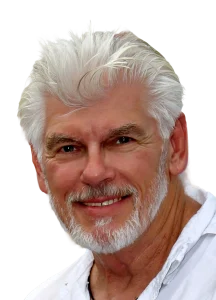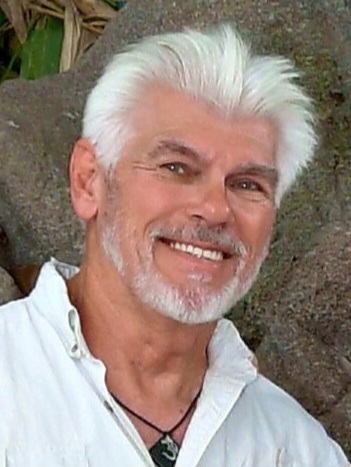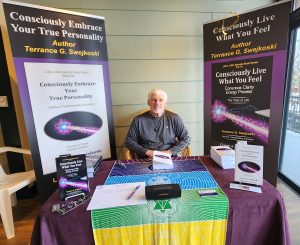 Discover the Transformative Power of Consciously Live What You Feel
Discover the Transformative Power of Consciously Live What You Feel
Have you ever wished for a deeper connection to yourself, a sense of clarity amidst chaos, or a way to authentically live aligned with your inner truth? If so, my book Consciously Live What You Feel is an invitation to rewrite how you experience life—with mindfulness, emotional awareness, and a profound connection to your true self.
This isn’t just a book; it’s a guide to awakening. It offers practices, reflections, and life-changing insights designed to help you step into your most genuine and centered self. Wherever you are on your personal growth journey, Consciously Live What You Feel will inspire transformation from the inside out.
What Consciously Live What You Feel Offers
At the heart of this extraordinary book is a compassionate roadmap that empowers readers to slow down, tune in, and listen deeply to what their emotions are trying to reveal. My message is simple yet profound—your feelings hold the key to unlocking a more meaningful and intentional life through conscious self-awareness.
A Guide Grounded in Practical Wisdom
One of the most beautiful aspects of Consciously Live What You Feel is its practicality. The book doesn’t just describe what mindfulness and emotional awareness are; it equips you with exercises and tools you can use right now to change how you experience your world.
From mindful breathing exercises and emotional reflection techniques to journaling prompts and grounding practices, every page invites you to take action. Each step you take, no matter how small, builds your capacity to connect with your emotions, stay present, and live consciously.
The Impact You Can Expect
What can conscious living do for you? Readers have shared incredible testimonials, describing how this book has helped them transform their lives in meaningful ways:
- Calm Your Mind: Daily mindfulness practices help quiet the mental noise and create moments of stillness.
- Deepen Emotional Awareness: Understand and honor your feelings so they no longer overwhelm or control you.
- Strengthen Relationships: Learn how mindfulness enhances empathy and communication, fostering deeper connections.
- Navigate Life’s Challenges with Grace: Cultivate resilience by responding to difficulties from a space of clarity and presence.
- Rediscover Meaning: Connect with your inner self to find greater peace, purpose, and authenticity in your life.
I use a gentle yet authoritative voice to remind you that transformation isn’t about perfection—it’s about small, consistent steps forward.
Why You Should Take the First Step
The world we live in often pulls our attention outward, distracting us from the richness of our inner lives. We become so focused on doing, achieving, and rushing through life’s demands that we lose touch with what truly matters—our emotional well-being, our presence, and our connection to ourselves and others.
Consciously Live What You Feel acts as a life raft, guiding you back to the calm waters of self-awareness and conscious living. It’s your permission to pause, breathe deeply, and finally listen to the quiet wisdom within you.
But like any meaningful change, this shift begins with a decision—taking the first step. My book lays out a path for you, one filled with compassion, clarity, and actionable guidance. The only thing left is for you to take it.
Join the Conversation
The ripple effect of Consciously Live What You Feel extends beyond its readers. As people worldwide share their stories, quotes, and insights from the book, they inspire others to explore mindfulness and emotional awareness for themselves. This growing community reminds us that conscious living is not a solitary endeavor; it’s a shared experience that connects us all.
You are invited to join this conversation. Share your thoughts, your breakthroughs, and your moments of clarity on social media. Use the hashtags #ConsciouslyLiveWhatYouFeel or #MindfulMoments to connect with other readers who, like you, are seeking a more honest, grounded, and fulfilled way of life.
Whether you express your reflections in a journal, share them with friends, or speak them into the universe, your voice matters. Together, as a community, we can explore the depths of our feelings while cultivating collective compassion and presence.
Take the First Step Toward Your Transformation
Imagine waking up each morning with a sense of purpose rather than feeling overwhelmed. Imagine navigating difficult emotions with understanding rather than resistance. Imagine feeling fully present in all aspects of your life: your relationships, your work, and your personal life.
All of this—and more—is possible through conscious living. Consciously Live What You Feel is your guide to building this life, offering compassionate support and practical wisdom every step of the way.
The transformation starts here.
Order Your Copy Today
Don’t wait to start living the life you deserve—a life of ease, authenticity, and inner peace. Order your copy of Consciously Live What You Feel today and begin your mindfulness journey.
This isn’t just a book—it’s a companion in friendship on your path to growth. Allow it to help you reconnect with yourself and create a life filled with intention, truth, and joy.
Your conscious clarity life is waiting. Take the first step toward mindful living today.






